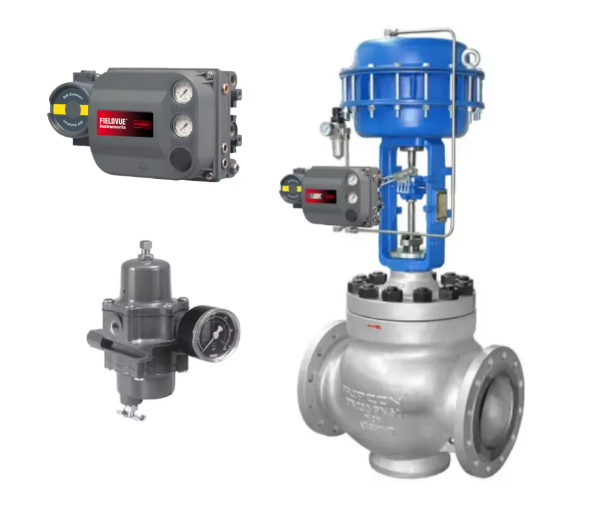
Control valves are critical components in industrial processes, regulating the flow of fluids such as gas, steam, water, or chemicals. Proper calibration of a control valve ensures accurate performance, optimal efficiency, and extended equipment lifespan. Calibration involves adjusting the valve positioner to ensure the valve responds correctly to control signals. This guide provides a step-by-step process for calibrating a control valve positioner, ensuring precise operation and reliable performance.
The actuator spring range determines the pressure required to move the valve. For example, if the actuator spring range is 80-240 kPa, adjust the pressure regulator to 2.4 bar (240 kPa) to ensure the valve operates within its specified range. This step ensures the control valve responds accurately to pressure changes.
Open the function box of the valve positioner and connect the analog signal’s positive and negative poles. Proper wiring ensures the positioner receives the correct control signals from the system, enabling precise valve movement.
Open the positioner cover and manually adjust the feedback rod to ensure it is in a horizontal position when the valve is at 50% opening. Secure the feedback rod clamp block to maintain this position. This step ensures accurate feedback on the valve’s position.
The zero position is the valve’s starting point. Set the input signal to 4 mA and check if the positioner output pressure is zero. If not, adjust the zero adjust knob (black wheel) until the output pressure gauge reads zero. For air-to-open valves, the valve should be fully closed at 4 mA. For air-to-close valves, it should be fully open. This step ensures the valve is in the correct initial position.
Input a 5 mA signal to check if the valve responds. If there is no movement, adjust the zero adjust knob until the positioner output pressure gauge and valve begin to move. Return to a 4 mA signal and confirm the valve is in the closed position (or fully open for air-to-close valves). Repeat this process until the valve consistently returns to the zero position.
Set the input signal to 20 mA and check if the valve reaches 100% opening. If the valve travel indicator is too high or too low, adjust the travel lever. Loosen the locking screw and move the lever toward the "+" sign to increase travel or the "–" sign to decrease travel. Tighten the locking screw after adjustment. If the valve does not reach 100% opening, move the screw 1 mm toward the "+" direction and retest. After adjusting the full range, recheck the zero position by inputting 4 mA and repeating step 4 if necessary.
Input signals of 4 mA, 8 mA, 12 mA, 16 mA, and 20 mA to verify the valve’s travel corresponds to 0%, 25%, 50%, 75%, and 100% positions on the travel plate. If the valve does not respond proportionally, repeat the zero and full-range adjustments until the valve moves accurately at each signal level.
Calibrating a control valve ensures it operates within specified parameters, preventing issues such as over-pressurization, underperformance, or equipment failure. Proper calibration also improves process efficiency, reduces energy consumption, and minimizes downtime. Regular calibration is particularly important in industries where precision is critical, such as oil and gas, chemical processing, and power generation.
Inconsistent Valve Movement: If the valve does not respond proportionally to control signals, check for mechanical obstructions or wear in the valve components.
Pressure Gauge Fluctuations: Ensure the pressure regulator is stable and the air supply is consistent.
Feedback Rod Misalignment: Recheck the feedback rod position and ensure it is securely clamped.
Calibrating a control valve positioner is a meticulous but essential process to ensure accurate and reliable valve operation. By following the steps outlined above, you can achieve precise calibration, optimize system performance, and extend the lifespan of your control valve. Regular maintenance and calibration not only enhance operational efficiency but also contribute to the safety and reliability of industrial processes. Whether you are a seasoned engineer or a maintenance technician, mastering control valve calibration is a valuable skill that ensures the smooth functioning of your systems.